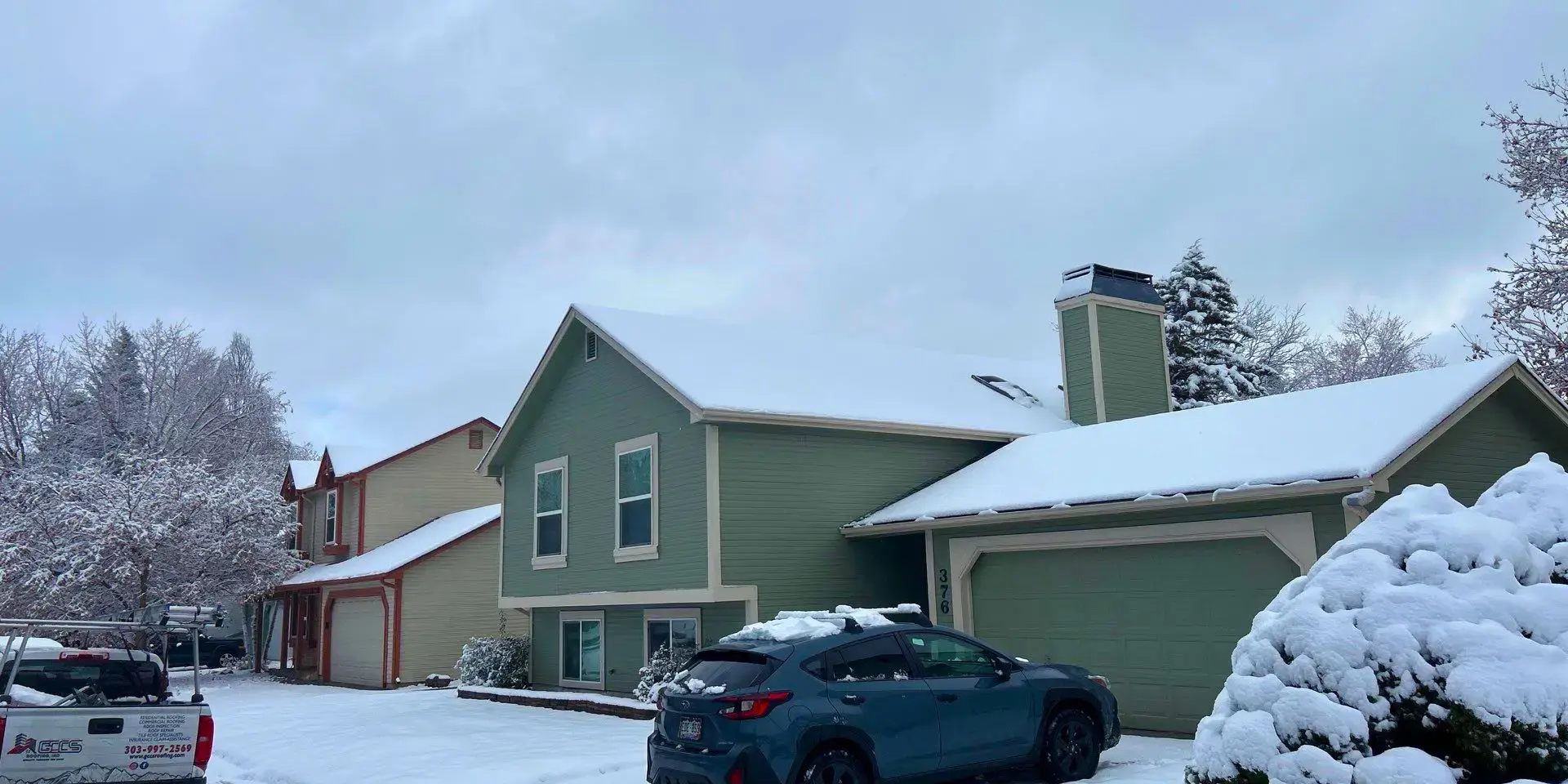How Much Snow Can a Colorado Roof Safely Hold?
Understanding Roof Snow Load in Colorado
Every winter in Colorado brings breathtaking snowy landscapes—and the challenge of keeping roofs safe under the weight of that snow. A roof’s snow load capacity is the maximum amount of snow and ice it can safely support before structural stress or damage occurs. This capacity depends on several factors, including roof design, pitch, materials, insulation, and local building codes.
Across Colorado, snow loads vary widely. In lower-elevation cities along the Front Range, roofs are typically built to handle lighter snow accumulation. However, in high-elevation mountain areas, where snow is heavier and lasts longer, roofs must be designed to withstand far greater loads.
How Much Snow Weight Is Too Much?
There isn’t a single number that applies to all homes in Colorado. Roofs in Denver or Littleton may be designed for moderate snow, while those in Summit County, Vail, or Estes Park must bear much heavier amounts.
What really matters is snow density. Fluffy, freshly fallen snow is much lighter than old, compacted, or wet snow. After a few sunny days followed by freezing temperatures, snow can become dense and heavy—putting far more strain on a roof than its depth might suggest. Even a foot of wet snow can weigh more than two feet of fresh powder.
Recognizing Warning Signs of Excessive Snow Load
When snow builds up faster than it can melt or slide off, your roof may start showing early signs of stress. It’s important to recognize them before serious damage occurs:
- Sagging ceiling or rooflines
- Cracks appearing on interior walls or ceilings
- Popping, creaking, or groaning noises inside the home
- Difficulty opening doors or windows
- Leaks or water stains as the snow begins to melt
These signs mean your roof could be approaching its load limit, and professional help is needed immediately.
When and How to Remove Snow Safely
As a general rule, it’s best not to let snow pile too high, especially after a heavy or wet snowfall. For many homes, if snow appears more than a foot deep or is visibly dense and compacted, it’s time to clear it.
The safest way to remove snow is with a roof rake from the ground, pulling down small sections at a time. Avoid climbing onto the roof, as this can be extremely dangerous and may cause damage to the shingles or roofing material. If you can’t reach or remove it safely, call a professional service experienced in snow removal for Colorado homes.
Preventing Roof Overload Before Winter
The best defense is preparation. Before the first major snowfall, inspect your roof for any signs of weakness, such as cracked shingles, soft spots, or sagging areas. Make sure your attic insulation and ventilation are balanced—this helps prevent ice dams and uneven snow melting.
You can also consider adding snow guards to control how snow slides off the roof or using heating cables along the eaves to reduce ice buildup. Regular roof inspections after major storms ensure that any minor issues are fixed before they turn into bigger problems.
Why Roof Design and Pitch Matter
Roof shape plays a major role in how much snow it can hold. Steeper roofs allow snow to slide off more easily, while flat or low-sloped roofs tend to collect and retain it longer. Homes with valleys, dormers, or parapets can develop snow drifts—areas where snow piles deeper and creates concentrated stress points.
This is why no two roofs in Colorado face exactly the same risks. A home just a few miles away, but at a higher elevation or with a different design, may experience drastically different snow loads.
The Importance of Professional Inspections
After particularly heavy snowfalls, it’s smart to schedule a roof inspection. A qualified professional can evaluate the structure’s integrity, check for hidden stress or damage, and recommend reinforcements if needed. They can also assess ventilation and insulation, helping reduce future ice dam issues.
For homeowners in Littleton and surrounding areas, GCCS Roofing, LLC provides reliable inspections and maintenance services designed specifically for Colorado’s demanding winter conditions.
Final Thoughts
Colorado’s winters are both beautiful and unpredictable. Roofs across the state face an intense combination of snow, sun, and rapid temperature swings. Understanding how much snow your roof can safely hold—and taking steps to maintain it—can prevent costly damage and protect your home for years to come.
Staying proactive with regular maintenance, safe snow removal, and professional inspections is the key to keeping your home secure and your roof strong through every Colorado winter.







